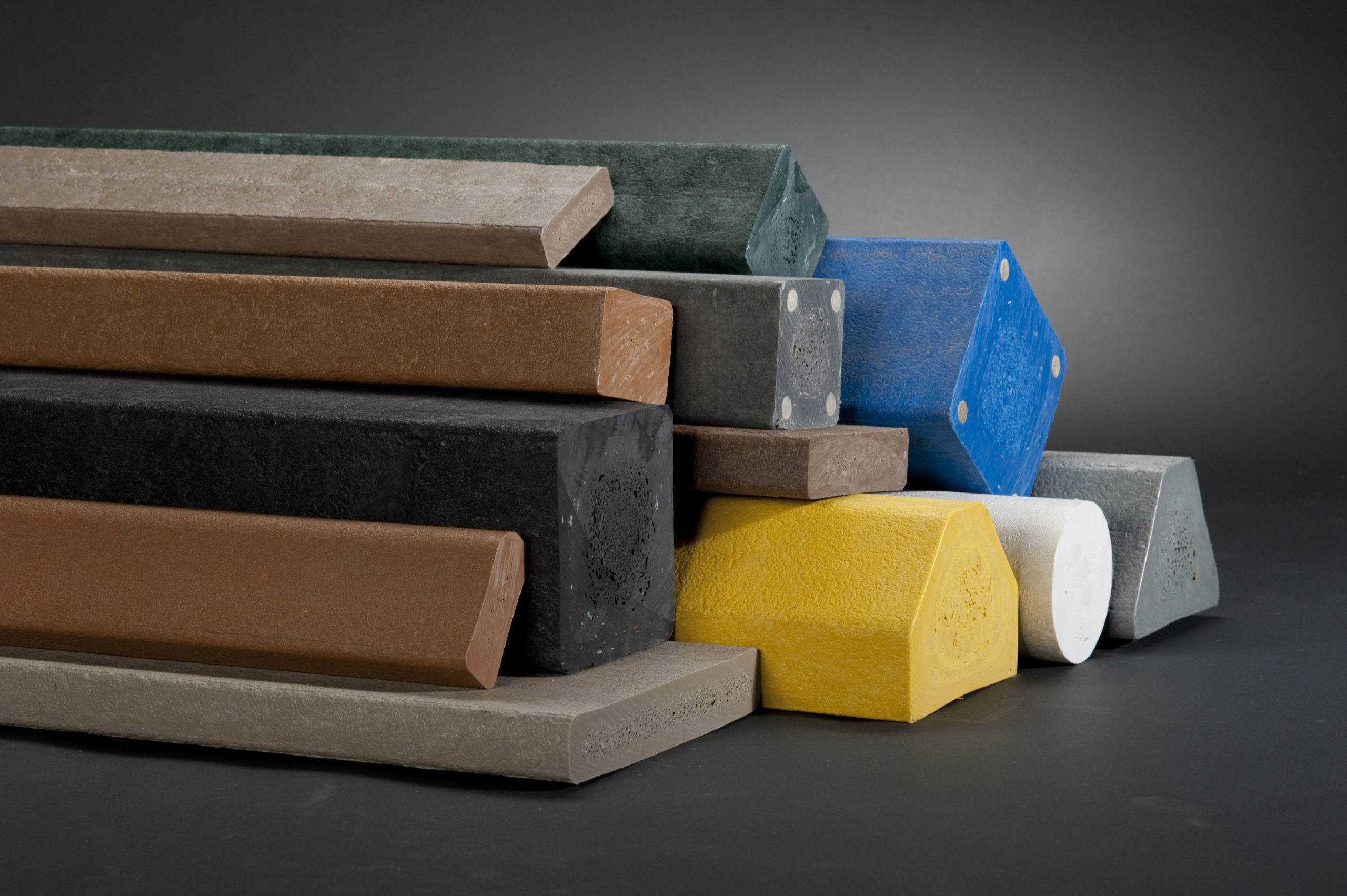The Advantages of Using Composites in Building Products
The Advantages of Using Composites in Building Products
Blog Article
Opening the Environmental Advantages of Recycled Composites in Building and Style
In the world of building and construction and layout, the use of recycled composites holds considerable assurance for improving sustainability practices and lowering ecological effect. The shift towards a much more sustainable future in these markets hinges on unlocking the complete capacity of recycled compounds.

Ecological Influence Reduction
The decrease of environmental effect via using recycled compounds in construction and layout plays a vital function in lasting techniques. By integrating recycled compounds into structure products, the construction industry can substantially reduce its carbon impact and add to a more green future. These lasting products, made from repurposed plastics, wood fibers, or various other recycled components, provide a sensible choice to conventional building and construction materials without jeopardizing on top quality or sturdiness.
Recycled composites aid divert waste from garbage dumps and minimize the need for extracting basic materials, therefore preserving all-natural resources. In addition, the production process of these composites often takes in much less power and sends out less greenhouse gases contrasted to generating virgin materials (composites). This shift in the direction of making use of recycled compounds not just lessens ecological injury however additionally promotes a circular economy by encouraging the reuse of materials that would otherwise be thrown out
Waste Reduction
With an emphasis on reducing waste in building and construction and design, the combination of recycled composites provides a lasting remedy to reduce ecological influence. Waste minimization is a vital facet of sustainable methods, and the usage of recycled composites presents a possibility to achieve this goal successfully. By using products that have currently offered their preliminary objective, such as recycled plastics or recovered timber fibers, the building and construction and style markets can dramatically reduce the amount of waste generated and sent to landfills.
Recycled composites have the potential to divert considerable amounts of waste from typical disposal methods, adding to an extra round economic situation where sources are made use of successfully. Additionally, the production procedure of recycled compounds often takes in much less power and produces fewer exhausts compared to virgin products, further reducing the environmental footprint of building and layout jobs.
Executing waste reduction techniques through the consolidation of recycled composites not just assists in conserving natural resources but additionally advertises an extra lasting strategy to building and developing for a greener future.
Energy Preservation
Integrating recycled composites not only lessens waste in building and construction and layout yet also plays an essential function in improving energy conservation practices within the sector. Making use of recycled composites in construction can considerably add to power conservation with different methods. First of all, the manufacturing of virgin materials normally needs considerable energy inputs, whereas using recycled compounds takes in much less energy, consequently reducing overall energy consumption. Additionally, including recycled compounds can add to much better insulation residential or commercial properties in structures, minimizing the demand for extreme home heating or cooling, and consequently lowering power use for environment control. Additionally, the lightweight nature of numerous recycled composites can lead to lighter structures, calling for much less energy for transportation and setup. By advertising making use of recycled composites in building and construction and layout, the market can make considerable strides towards achieving power efficiency and lowering its carbon impact, ultimately adding to an extra sustainable constructed environment.
Carbon Footprint Reduction
Enhancing sustainability practices through the use of recycled composites in building and construction and layout significantly lowers the carbon footprint of the industry. By including recycled materials into the production of composites, the need for virgin sources decreases, resulting in lower power intake and greenhouse gas discharges linked with typical production procedures. This reduction in carbon impact is vital in combating environment modification and advertising a more environmentally friendly strategy to construction and layout.
The carbon footprint reduction achieved via the fostering of recycled compounds lines up with Full Article the international push towards lasting practices and the reduction of industrial exhausts. Ultimately, by prioritizing the combination of recycled compounds, the industry can make substantial strides in reducing its carbon impact and contributing to an extra lasting future.
Lasting Future
The assimilation of recycled composites in building and construction and style not only addresses prompt environmental issues however also lays a strong foundation for a sustainable future in the market. By integrating recycled compounds into structure products and items, the construction and style fields can dramatically lower their dependence on virgin resources, leading to a more circular economic situation. This shift towards sustainability is essential for minimizing the environmental effect of traditional building and construction methods, which often lead to high degrees of waste generation and resource depletion.

Conclusion
In conclusion, recycled composites provide substantial ecological advantages in building and construction and style by reducing ecological influence, minimizing waste, saving power, reducing carbon footprint, and promoting a lasting future. Embracing the usage of recycled composites can add to a much more environmentally-friendly strategy to structure and design, eventually bring about a much more sustainable and greener future for all.
The reduction of ecological influence with the use of recycled compounds in construction and layout plays a crucial duty in sustainable techniques.With an emphasis on lessening waste in building and construction and layout, the integration of recycled compounds look at this now offers a sustainable solution to the original source lower ecological impact. By promoting the use of recycled composites in building and layout, the industry can make significant strides in the direction of attaining power effectiveness and minimizing its carbon impact, eventually contributing to a more lasting developed environment.

Report this page